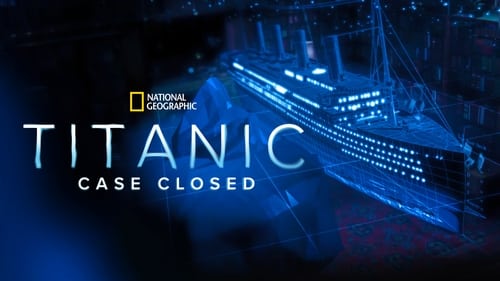2hotFeature
one of my absolute favorites!
Acensbart
Excellent but underrated film
CrawlerChunky
In truth, there is barely enough story here to make a film.
Ezmae Chang
This is a small, humorous movie in some ways, but it has a huge heart. What a nice experience.
funguymon
I really enjoyed watching this documentary! Tim Maltin seemed like a respectable guy with neat enthusiasm. The various ways he came to his conclusion was hard work and adventure. For example, the various places he went to to gather evidence was intriguing.The character reenactments, the over portrayal of his theory, and explanations were well done. I walked away learning much on science, history, and record keeping. The film is well balanced between reenactments and general documentary shots.The reason why I gave it not a perfect score is because I felt the speed moved a little slow with the repeat of the dialogue of the characters and with the CGI effects- though I get they wanted emphasis on witness accounts.I recommended this film to some friends.
Jennifer (LadySailor1975)
I always knew there was more to it! When I was almost 11 (when the Titanic wreckage was found), the TV news diagrammed the size of Titanic by showing familiar objects next to a silhouette of it (such as various planes, buses, etc) and it shocked me. How could they not see an iceberg big enough to sink such a large ship? My uncle was a commercial fisherman and he always insisted there was more (I wish he had lived to see this). Now, we finally have the answer! It makes perfect sense! I think anyone who is interested in maritime history should drop everything and watch this immediately. Yes, I said immediately. What are you waiting for?This documentary follows scientist and maritime historian Tim Maltin as he puts his theories to the test as to why Titanic struck the iceberg on that night. He knew that there had to be more. He travels the world, reads logs of other ships that were in the area in the days before and after the disaster, sees the Labrador current and icebergs with his own two eyes, collects the data he needs, and puts it all together. He finally reveals to the world the true cause of the tragedy. This also proves that Stanley Lord was indeed telling the truth of what he saw that night. The scintillation, which we all see millions of times in our lives, is absolutely a perfect explanation for why they were not able to read the Morse code. And proof that mirages happen anywhere at all where there are layers of warm and cool air, not only a desert was the final proof we needed for what really happened that night. Now, if I ever have a son I will name him after Stanley Lord. Rest in peace, noble captain!It's awesome to see the silly and idiotic myths being debunked. Titanic was NOT made of weak steel, there was no "speeding through ice zones to make up time," and the captain was not drunk. Today I believe that if anyone believes the weak steel myth, you are gullible. This is based from Tim Maltin's research and book "Titanic: A Very Deceiving Night" (ebook only). Why didn't anyone else think of this? What a brilliant man! All I ask now is another documentary based on Maltin's "101 Things You Though You Knew Anout Titanic" to be made! I hate all those stupid myths that are still taught to schools.If you want the truth, this is one of the few truly great ones to go to for that.
gavin6942
The documentary looks at the reasons behind the sinking and lack of rescue of the RMS Titanic, and sees Tim Matlin, author of several books about the Titanic travel to locations across Europe, North American and the Atlantic Ocean to meet experts and perform experiments to test theories.I have never read a book on the Titanic or seen any documentaries. I was vaguely familiar with some of the theories discussed here, about the captain being drunk (false) and about the lack of lifeboats. This not only covered what little I did know (and set me straight on false assumptions), but introduced me to new concepts I had never considered, such as the shipping routes and radio communication (which I would have thought minimal at the time).Really a great film for those who want to learn about the Titanic.
TxMike
I found this on DVD at my public library, a Smithsonian film.The main investigator featured in the film is what the DVD jacket calls "Titanic Detective" Tim Maltin who apparently has been at it for 20 years. The findings are not presented as a Scientific investigation would be, presenting the summary of findings first, then showing how the findings were arrived at. Instead it is presented as a TV show mystery might be, that is keep you in suspense until near the end. I suppose you have to do that to make money.Anyway it is an intriguing film, clearly the result of much study. Right before the half-way point in the film, when Maltin introduced the point that some very cold Labrador Current water adjacent to much warmer water was observed the night of the incident, I pretty well figured out where all this was going. The cold water mirage effect.I happen to be a scientist and an amateur photographer, so always keen to learn about lighting and lenses. The mirage effect occurs when layers of air are at two different temperatures. This creates what in effect is a lens which bends light such that at a distance what we see doesn't really represent the objects we intend to look at. The greater the temperature difference, the greater the effect. And, under the right conditions distance objects can appear much higher than they really are or, conversely, much lower than they really are.With the detective work to examine many old maritime records from many ships 100 years ago, including one that took the same route as the Titanic, Maltin proved that these great temperature gradients were present that night in April 1912. Plus first-hand accounts of survivors matched what would be expected. The Titanic look-outs were experts, they were alert, but the unusual diffraction of light meant that a large iceberg that normally would be spotted 30 minutes away was spotted only 35 seconds away. It was a perfect set of conditions for the catastrophe.It also explains why the nearest ship did not respond to the distress call from the signal lamp on the Titanic. The weather conditions and cold water mirage made the lights flicker such that it appeared to be random noise instead of an actual signal.The conclusions are all circumstantial, because Maltin was not there and could not possibly verify his conclusions. But to me, they seem very convincing and this study appears to best explain why everything happened the way it did that night.A must-see for those interested in the Titanic story.


